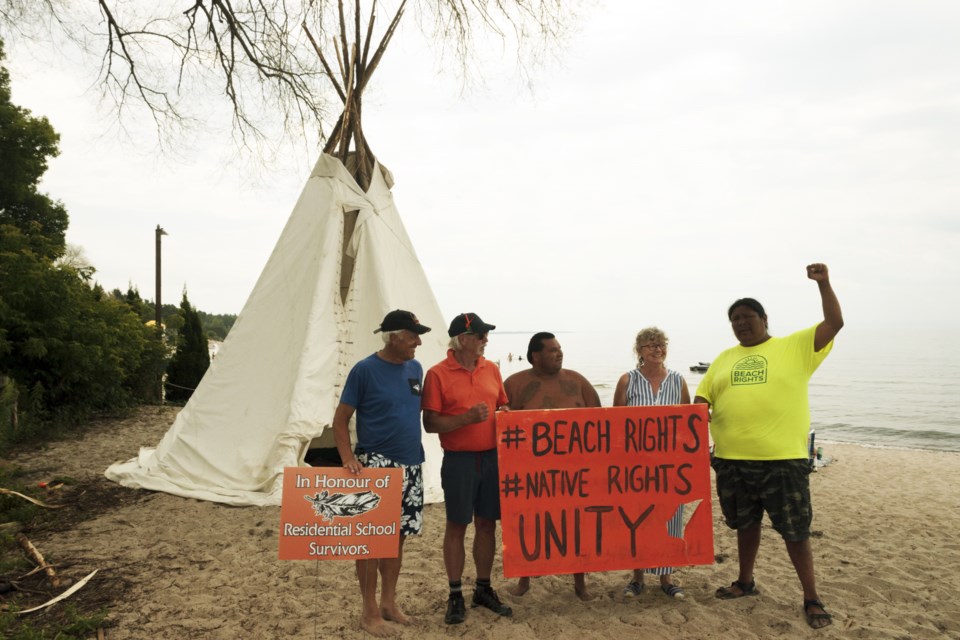Johnny Hawke is taking his peaceful demonstration a step further.
Last month, a ‘mobile heritage centre’ was constructed at Thunder Beach in Tiny Township, consisting of a sacred fire and tipi. Hawke set up a second tipi around sunrise this morning at Balm Beach.
Hawke is one of a group of people called the Indigenous Land Defenders from the Anishinaabe Community of G'Chimnissing on Christian Island (Beausoleil First Nation).
The first encampment was situated in proximity to the cottage of federal Crown-Indigenous Relations and Northern Affairs Canada Minister Carolyn Bennett. Hawke said the goal is to raise both awareness and education on historical land injustice..
As well, the mobile heritage centre was meant to help the local non-Indigenous community work together to find practical solutions over the denial of access to water.
“This is an educational awareness campaign to inform the public about the local Indigenous community’s historic land grievances of the 50,000 acres that were misappropriated” through the 1795 Penetanguishene Purchase and the 1816 Lakes Huron and Simcoe Purchase, Hawke explained.
The second site expands on the original motivation for a wider audience, to further awareness of the subject with the greater numbers of people that Balm Beach draws as a tourist destination.
“It’s an extension of exercising our inherent rights to our traditional territory (of the Negig, Atik and Naame clans), and it’s in collaboration with beach rights grievances which have been gaining attention in this area,” said Hawke.
“We’ll be walking on the so-called ‘private property’ in the beach area to assert the Indigenous rights to water and shores on what is ‘unceded’ territory.”
Hawke walked along the stretch of sands from the second site location adjacent to Balm Beach’s primary parking location for a kilometre to the south, hoisting his flag high and engaging with beach goers enjoying the beach on a sweltering day.
“A lot of times when it comes to land grievances with the Indigenous and settler communities, there’s always a division which is the cause of the government’s inactions with our land grievances. This demonstration is a peaceful action to educate the public and to work in unity in shared concerns of accessing waterways," said Hawke.
Hawke isn’t a passive activist; he intends to reach out to both Tiny council and Beausoleil First Nation council to create a common area and foster discussion.
He said his goal is “to create a town hall and air our grievances to be heard. That’s in the works, to make practical solutions to remedy these shared grievances of the settler and Indigenous community.”
Cottager Evie Phillippopoulos, 23, was tending to a stand of plants near Hawke’s mobile heritage centre.
“Personally, I’ve learned a lot through TikTok and online sources, and a lot of people don’t use those social media platforms,” said Phillippopoulos, explaining her education regarding Indigenous-focused topics such as the residential school tragedies. “People who don’t use it, older generations, (and on-site presence are) a good way to educate them in person and inform them of what’s happening.”



